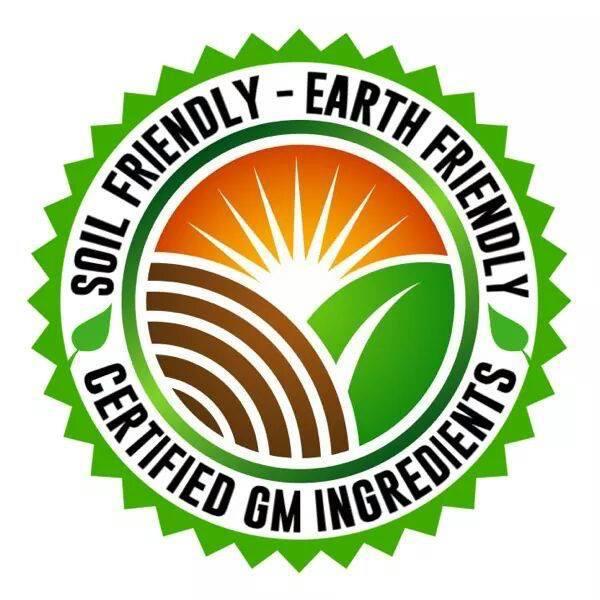As the Brazilian Senate continues its fractious debate over repealing the nation’s GMO labeling law, I’ve been prompted to re-evaluate my own somewhat controversial position as a pro-science campaigner defending GMO labeling.
Since 2003, Brazilian law has required all consumer products containing genetically modified material to carry a scary-looking label that depicts a black T (standing for the Portuguese word “transgenicos”) inside a yellow triangle. It bears a striking — and probably not entirely accidental — resemblance to the fearsome biohazard symbol.
It’s not quite a skull-and-crossbones, but it certainly comes close. And it underscores the problem with labeling, namely, that it suggests that the presence of GMOs is something to be concerned about, though scientifically speaking, it is not. There is a worldwide consensus that genetically engineered foods are as safe as any other, which prompted the board of directors of the American Association for the Advancement of Science to release a statement opposing mandatory labeling in 2012.
Indeed, most food containing GMOs is chemically indistinguishable from conventional alternatives, which in the US might carry the Non-GMO Project butterfly symbol so detested by the pro-science crowd. This is especially the case when we’re talking about derivatives: sugar is just sugar, and oil is just oil, irrespective of whether the crops it came from carried transgenes or not.
I find the Brazilian system irksome because it accepts as a baseline the presumption —insisted on by anti-GMO campaigners — that all GMOs are the same, and that the term GMO is actually meaningful at all.
I would dispute this on straightforward scientific grounds. What matters is the trait — the product, in other words, not the process. Hence a Roundup Ready soybean is very different than a virus-resistant papaya, and they are both very different than an Arctic Apple which doesn’t turn brown when sliced (to reference three GMOs available to US consumers).
Sticking a big T on these products (especially one in a scary yellow warning triangle) is misinforming, because it suggests they have something in common, which in reality they don’t.
Different transgenic crops have different impacts, which is ignored in an across-the-board label. A Bt corn crop, which reduces farmers’ use of insecticide, should surely be considered differently from an herbicide-tolerant soy, which might increase the use of glyphosate.
These are just a few reasons why mandating labels to indicate the presence of GMOs could misinform consumers as much as enlighten them.
Still, I have supported GMO labeling in the past because I see it as a way to defuse the perennial controversy about genetic engineering through maximum transparency. This is both a moral and pragmatic position.
It is moral because yes, people do broadly have a “right to know” what they are eating. And it is pragmatic because peoples’ fears tend to diminish as their sense of agency increases: exercising choice just feels much less risky than something imposed on you by outside forces, whatever the actual scientific evidence might be.
But the morality issue becomes complicated by a new study indicating that food prices are likely to rise if manufacturers switch to non-GM products in order to avoid the stigma of a label. This has real ramifications for low-income consumers, who shouldn’t have to bear the price of typically elite consumer food fears.

As I follow the Brazilian debate, I find myself welcoming the efforts of Brazilian senators to ditch the transgenic T label. However, the perception that the use of genetic engineering — and its resulting products — will now be kept “secret” can surely only lead to greater unwarranted fears about GMO safety and a further proliferation of the already-widespread conspiracy theories about the technology generally.
The anti-GMO movement in the United States really only got going when activists discovered the power of the labeling demand, both as a political organizing tool, and as a way of heightening fear among consumers. (“Why would they refuse to label GMOs in your food unless they knew they were dangerous?”)
Conversely, the passage of the National Bioengineered Food Disclosure Law and its signature by President Obama on July 26, 2016, took the wind out of the sails of anti-GMO campaigners by promising that more transparency on genetic engineering would eventually be achieved in the American food system, while kicking into the long grass the precise details of how this would be implemented. (Perhaps most importantly, it also pre-empted state laws on GMO labeling that had become such potent rallying points for food activists.)
What Brazil needs — and what the US will hopefully also end up with — is a system that is transparent enough to reassure consumers, but subtle enough to allow the complexities of the real world to be properly reflected.
After all, the use of genetic engineering might also be something for marketers to shout about — “out and proud!” as it were. Want less insecticide sprayed on your corn? Support GMO Bt crops! Want to support family farmers in Hawaii? Buy Rainbow papaya!
In Brazil, those opposing the repeal of the T symbol comprise the usual parade of celebrity chefs, NGOs spreading pernicious myths about GMO health impacts, and left-wing activist groups that oppose corporations generally.
A smart labeling regime might actually call their bluff by giving consumers access to relevant and useful information rather than fanning the flames of anti-science superstition.
